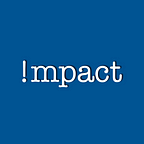Attracting “New” Talent to “Old” Industries: Challenges and Solutions - Joseph W. Kelly
Joseph W. Kelly, a highly experienced strategic advisor sat down to discuss new and future talent in long-established industries.
Q: Joe, let’s start out by defining what we mean by “new” talent. What does the workforce of the future look like from your vantage point?
The workforce of the future is a dynamic, agile group of individuals that is less resistant to change than prior generations. This group will likely have 6+ “careers” — defined as different types of roles and requirements for skills — over the course of their working lives. As a result, they need to develop core capabilities beyond traditional role-based or functional expertise. Things like creativity and empathy, for example, are advanced skills that will potentially be more fully developed in the workforce of the future.
Emerging talent groups will be digital natives — they learn and think differently than prior generations. This talent will want organizations that will support their continual development of new skills — understanding that the current half-life of those skills is less than five years.
Finally, “new” talent will insist on understanding organizational values and how employers contribute to communities beyond the normal focus of organizations on driving profitability.
Q: Are the in-demand skills that we’re talking about as important to “mature” industries — like oil and gas and manufacturing — as they are to “younger” sectors, like technology? What parts of their business are looking to expand the skills and capabilities of the workforce and why?
To some extent, the most in-demand skills transcend industries. Traditional functions like IT, Marketing & Sales, and Finance in all sectors are experiencing challenges. As an example, there is research that shows that Marketing & Sales need to refresh their skillsets every 12–18 months to keep pace with emerging digital technology enablers.
Even more traditional areas like manufacturing and product development are highly dynamic. Newly developed technologies to allow for great efficiency, rapid product development, prototyping and testing create both opportunities and competitive challenges as companies can quickly leapfrog one another. Without a focus on bringing in or developing talent that understand how to take advantage of these opportunities, organizations will fall behind the competition. Many new competitors are disrupting mature industries by taking advantage of new approaches.
Q: What are the unique challenges mature companies have in attracting and retaining this kind of talent?
Organizations in more traditional sectors have created long-term success by having highly defined structures and processes that focus on scale and efficiency. In this emerging world, speed and agility are required to be successful across the entire business, including in the way talent is recruited, developed, and retained. “New” talent often gets frustrated with traditional ways of doing work as they have strong ideas about how to more rapidly achieve goals and improve products.
All organizations will need to pivot to using approaches focused on teaming — both inside the organization and with third parties and ecosystems. A key recent example is the development of the CoOVID-19 vaccines that involved multiple companies and organizations. In the future, it will be more of a challenge for organizations to be able to do everything “in-house” and traditional industry players will need to become more comfortable tapping into multiple sources of talent.
Q: What specific tactics would you recommend to these companies to overcome these challenges?
Leaders and Managers in more traditional businesses must begin to move towards talent development and coaching that focuses on driving performance. To attract the right talent, they will really need to apply Design Thinking to their employee experience. They will need to understand and empathize with what their employees are experiencing, define the issues they face, ideate on potential solutions to those issues, prototype solutions and then test the effectiveness of those solutions.
Strategies related to continuous skill development offer an example. Many organizations are creating easily accessible internal job marketplaces to allow their talent to search for that next challenge inside the organization instead of resorting to outside opportunities.
The other major change many organizations need to make is to adopt a “growth” mindset — understanding that “new” talent will have strong points of view and a desire to tackle challenges. Employees at all levels will want to continually learn and develop new skills. Business leaders need to have a positive view of their employees and their ability to grow which will drive a more engaged and happier workforce.
Q: Once on board, how does a company make sure these unique team members are given the best chance of success?
Organizations will continually need to bring in outside perspectives — and then listen to and learn from those perspectives. They should be open to change and adopt practices that make sense to drive the organization forward. Organizations will need to replace old school ways of managing, like command and control, with teaming and effective uses of collaboration and digital technologies. The focus must be on coaching for performance while demonstrating key enduring aspects like integrity, trust, and ethical behavior. While context-specific skills like engineering will continue to be important, measuring and rewarding capabilities like creativity, empathy, emotional intelligence, and critical thinking will help differentiate talent. Leadership will also have to clearly articulate and deliver on corporate values and ESG-initiatives to respond to workforce demands for value and purpose beyond traditional profits.
